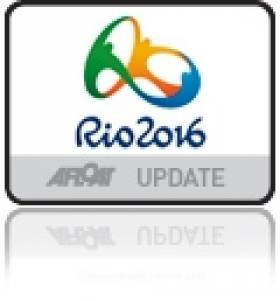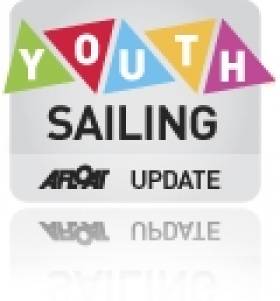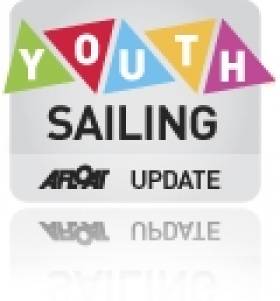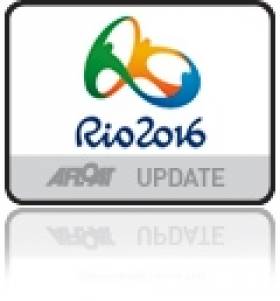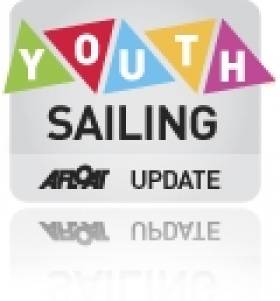Displaying items by tag: Laser Radial
Ballyholme Prepares for Belfast Lough Laser Nationals
#laser – Next week will see one of the most competitive sailing events seen in Northern Ireland for several years as the Olympic Laser class hosts its Irish Championships on Belfast lough.
This summer has seen the best Laser Radial sailors from Ireland including many well know faces from Bangor compete across Europe. Séafra Guilfoyle from Cork won the Silver medal at the ISAF Youth World Championships in Portugal where Sarah Eames also competed. Seafra and 6 members from Ballyholme YC also competed at the World Youth Championships in Poland where Seafra came 7th. BYC's Ryan Glynn has just returned from the UK Laser Radial Nationals at Largs, Scotland with 4th place. Brother (and last year's Topper World Champion) Liam Glynn was 5th (2nd Youth), Tim Brow was 7th while Laura Gilmore from SLYC was 1st Youth Lady in a fleet of 86 boats.
Ballyholme Yacht Club will host the Zhik Irish Laser National Championships from 28 - 31st August 2014 - all of the RYANI and ISA youth squads should be in attendance for the Radial championship and a number of the GB squad will also be competing. BYC has one of the largest Laser fleets in Ireland with over 50 regularly competing in club racing and their Icebreaker series over the winter. The 2013 Irish Laser Nationals had over 120 entries. Event Organiser Paddy Brow and Race Officer Robin Gray will ensure a great series of racing and socialising off the water.
The Laser is the most popular single handed dinghy in the world and an Olympic dinghy. There are 3 fleets - Standard, Radial and 4.7 - which use the same boat but have different sail sizes for different size and weight of crew. The Standard is a men's Olympic dinghy - James Espey from Ballyholme YC represented Ireland at London 2012 - and the Radial is the female Olympic dinghy - Annalise Murphy from National YC came 4th at the London Olympics. The 4.7 is a major youth pathway dinghy worldwide.
Today (Wednesday 20th) is the last day for Early Entry Discount and Online Registration.
Annalise Murphy Leads At 'Aquece Rio', Olympic Test Event
#annalisemurphy – Despite picking up a 21st place finish Irish sailing super star Annalise Murphy moved into pole position in the Laser Radial yesterday at the Olympic test event in Rio, Brazil. Racing on the big Copacabana race course waves, the National Yacht Club sailor from Dun Laoghaire had a poor opening race but hit back in the second of the day, picking up a third.
Tuesday's rain was replaced with sunshine and a cool 15 knot breeze across the five race areas. The waves remained on the outside courses whilst shifty conditions on the inside courses was present, ensuring firm tests of tactical nous.
On her day Murphy said, "I messed up the first race. I wasn't feeling so good in that big swell. I hit a mark and went for a swim as well so that was pretty frustrating but I came back good in the second race. I fought back to second by last reach but then I got a bit high and Anne Marie [Rindom (DEN)] got by me but it was really fun out there. The waves were really big, sun was shining and the wind was in so it was good."
Like Burton in the mens Laser class, Murphy was quick to echo his point on Rio's conditions, "I think the last two days the waves are probably the biggest I've ever raced in. It's not what you'd be expecting when coming to Rio as people have been saying it's a light wind venue. We've had quite a good breeze over the last two days and huge waves and it's difficult but it's something we're all going to have to learn and get used to."
Marit Bouwmeester was the standout performer in the 25-boat Laser Radial fleet and notched up double bullets. Her opening three races were not quite up to the high standard she sets herself but she bounced back and is fifth overall.
Rindom is three points behind Murphy on 13 points with Tuula Tenkanen (FIN) in third.
The leaderboards across the ten events on show at the Aquece Rio - International Sailing Regatta 2014 are starting to take shape following four days of competition in Rio de Janeiro, Brazil.
Medal Race places have been decided in the Men's and Women's RS:X fleets whilst the top batch of Olympic sailors have cemented their spots in the top places of the remaining fleets.
Racing continues today.
#aquecerio – Racing in big waves and a consistent breeze, the third day of racing at the Olympic test event at Aquece Rio saw a range of conditions with wind and waves on the outside courses which were ideal conditions for Ireland's Annalise Murphy to make an early mark on Olympic waters.
The National Yacht Club sailor took an opening race win and followed it with two fourth places. Tuula Tenkanen (FIN) took a pair of bullets in the Laser Radial and with the discard being applied after three races she loses her DNC from the opening race. Tenkanen tops the pack on two points with Anne Marie Rindon (DEN) second on four points and Annalise Murphy is third on five. Full results are here.
The third day of racing saw a range of conditions with wind and waves on the outside courses and tricky breeze inside Guanabara Bay.
A 15 knot south westerly breeze worked its way across the five race areas with outside courses Copacabana and Niteroi experiencing a stable breeze and wild waves. Inside Guanabara Bay was a different story with an up and down breeze that tested the sailors across Pão de Açucar, Ponte and Escola Naval.
Racing is scheduled to commence at 12:00 local time on 6 August. The 49er, 49erFX and Nacra 17 have four races scheduled whilst the remaining fleets will sail three.
Black Flag on the Baltic Costs Seafra Guilfoyle Top Five Finish at Radial Youth Worlds
#laserradial – A black flag disqualification in the second race of the Laser Radial Youth World Championships in Poland ruined Seafra Guilfoyle's ambition of a second youth medal this summer last week.
Despite the unlucky error, the plucky Crosshaven under–18 sailor, who took silver at the ISAF Youth Worlds in Portugal a fortnight ago, has again scored a series of top ten results in a strong 159–boat fleet.
Guilfolye was part of a seven boat Irish team.
After the black flag result, the Royal Cork Yacht Club sailor was lying 16th in Dziwnow but by Saturday's finish, in a measure of his speed and determination, the former Irish Optimist champion, had moved up to seventh overall.
'A black flag cost me a top 5 finish at worlds but still happy with seventh place. Looking forward to a few days off now', he concluded on Saturday.
A poor quality event website is here with a broken results link.
#youthworlds – Here's a wrap up highlight video from the ISAF Youth Worlds Laser Radial Boys and Girls fleets. Joel Rodriguez and Martina Reino made it a double Spanish victory in the Laser Radial fleets but it was a week in which Ireland's Seafra Guilfoyle topped the leaderboard taking silver in the last race.
The 2014 ISAF Youth Sailing World Championship has set new grounds for the regatta with Tavira, Portugal playing host to a record number of nations and sailors as the curtain was drawn on the event at the closing ceremony.
Tavira's Town Hall square played host to the closing ceremony on 18 July and saw the achievements of all 367 sailors from 67 nations celebrated.
Spain lifted the Nations Trophy for the first time in their history as they celebrated four medals from the eight classes racing in the Algarve.
Five days of intense competition saw 86 races completed with the finest youth sailors on the planet taking the honours.
The ISAF Bengt Julin Trophy was awarded to South Africa's Brandon Wijtenburg and Todd Fisher who had demonstrated good sportsmanship, respect, graciousness, helpfulness and friendliness to their fellow competitors.
First awarded in 1990, the ISAF Bengt Julin Trophy is a unique trophy which is awarded to a competitor or a National Team that has done the most to foster understanding and displaying attributes that are encouraged at the ISAF Youth Worlds.
Wijtenburg and Fisher were nominated by their peers and received the award from ISAF Vice President Nazli Imre.
Alongside the medal presentations special thanks was given to event sponsors, volunteers and boat suppliers who made the 44th edition of the ISAF Youth Worlds possible.
ISAF Vice-President Nazli Imre closed the event and handed the ISAF flag over to Langkawi, Malaysia, host venue of the 2015 ISAF Youth Worlds.
#FinnLynch - Laser Radial sailing sensation Finn Lynch has had things other than the water on his mind as of late, what with sitting his Leaving Cert this month.
But with exams winding up this week, the National Yacht Club prospect has a packed summer to look forward to - not least thanks to his nomination for the Nissan Generation Next accolade which is now open for public vote.
The current U21 Men's Laser Radial world champ is going from strength to strength, already securing himself a qualifying place for the 2016 Olympics after Split Olympic Week in April.
And that's all the more impressive considering the Carlow native's gruelling three-hour commute to his home club - a journey that could be cut to one hour should he be one of the six finalists to win a Nissan for a year.
Click HERE to see more about Lynch's nomination for Nissan Generation Next and how to vote before the closing date of Monday 30 June at 12pm.
#annalisemurphy – After two days of competition, Annalise Murphy's defence of her European Laser title has got off to a poor start in Croatia. The Dubliner lies 65th overall after counting 35, 32 and a 19 in some very light wind sailing off the Croatian port of Split.
Today there was only one race for all fleets, a second was not possible because of unstable winds. In the 92–boat Radial women fleet the top girls made no mistakes, however so there are not that many changes in the overall ranking. Murphy's arch rival Marit Bouwmeester (NED) however has found conditions very much to her liking and is still in the lead, with another great performance, a second today, followed by Svenja Weger (GER), who also finished second today. In third place is Chloe Martin (GBR). Irish girl Erica Ruigrok is 33rd overall.
Results to date posted on a very basic event website here
#annalisemurphy – Annalise Murphy has won Eurosaf Gold again on Lake Garda this afternoon in a commanding display of heavy air sailing with five race wins in the past week. Twice in a fortnight the Irish Olympic Sailing team is returning home from an international regatta with a medal, a sign of good progress after some early 'rusty' performances this season.
Two weeks ago in France it was the 49er duo Ryan Seaton and Matt McGovern but this afternoon it's was reigning European Laser Radial Champion Annalise Murphy's chance to shine.
Some on Lake Garda had come to an early decision about the winner in the Laser Radial fleet with Annalise winning twice on Saturday to give her a 16–point lead on Silvia Zennaro ITA going into today's final. In the end the National Yacht Club sailor easily defended her 2013 Italian Eurosaf crown, taking out Zennaro in a pre–start manoeuvre at the medal race. Later she would tweet: 'Medal race went to plan!'
Murphy shrugged off a first race 33rd result on Tuesday to overhaul her 39–boat fleet with a sizeable overall lead.The Dubliner won five of the eight races, admittedly in a fleet devoid of some of her fiercest Olympic rivals, but nevertheless a convincing performance that concluded with a sixth in today's final.
Delighted to win here at Lake Garda! Medal race went to plan! All packed up now just before the lightning storm! pic.twitter.com/7WCtPhtLUT
— Annalise Murphy (@Annalise_Murphy) May 11, 2014Unfortunately, the Irish 49er (Afloat's Sailors of the month for April) duo were unable to make amends for a boat handling error yesterday as the 49er medal race was cancelled today leaving them in fourth overall at Italian Olympic week.
Full results for all classes here
The next round of action for the Irish Olympic sailing team (and another medal?) is in a fortnight's time at Holland's Delta Lloyd regatta.
Ireland's ISAF Youth Worlds Team for Portugal Selected
#isafyouthworlds – It's an indication of the depth of current talent in Irish youth sailing that selection for this July's ISAF Youth Sailing World Championships came down to the last race of the youth championships in Howth this afternoon. The team of five boys and three girls will compete across three different classes in Portugal each one hoping to match Finn Lynch's stunning silver medal achieved in 2012.
Only one male and one female place were offered in each class and the contenders had to meet both international standards as well as win their category (except for the 29er) at the youth national championships to be selected. In the end sailors from Cork, Dublin and Belfast were winners and will race at Tavira, Portugal from the 12 – 19 July.
In the Laser Radial boys recent Laser Europa cup performer Séafra Guilfoyle (Royal Cork Yacht Club) will represent and Sarah Eames (Ballyholme Yacht Club) represents in the Laser Radial girls.
Robert Dickson and Sean Waddilove (Howth Yacht Club) who featured at last year's 420 Euros in Pwlhelli will race in the 420 boys, Lizzie and Cara McDowell (Malahide Yacht Club) in the 420 girls.
Recently fifth overall at the RYA youth championships in Weymouth skiff pairing Sean Donnelly (National Yacht Club) and Patrick Crosbie (Royal Cork Yacht Club) will race in the 29er open.
ISA Squad for the ISAF Youth Sailing World Championships 2014:
Laser Radial
Boy: Séafra Guilfoyle (Royal Cork Yacht Club)
Girl: Sarah Eames (Ballyholme Yacht Club)
420
Boys: Robert Dickson and Sean Waddilove (Howth Yacht Club)
Girls: Lizzie and Cara McDowell (Malahide Yacht Club)
29er
Open: Sean Donnelly (National Yacht Club) and Patrick Crosbie (Royal Cork Yacht Club)
Racing Cancelled on Day 3 of Miami Olympic Classes Regatta
#mocr– Sailors and their coaches made the most of their down time for the third consecutive day, as rain showers and little breeze put a damper on the racing outlook today (Wednesday) The light air theme so far this week has forced sailors to use their extended onshore hours to acclimate to the conditions and adjust their equipment accordingly.
The 10 Olympic and three Paralympic fleets finally launched at around 12:30 local time under cloudy skies and light breeze at 3 to 5 knots, with slight optimism that the wind would fill in this afternoon, similar to Monday and Tuesday. However, at approximately 14:00, all fleets abandoned any hope of racing and returned to shore for the day. All week, sailors have put a strong focus on boat positioning to harness what little breeze has been available on the course. Lighter crews have had the upper hand so far on Biscayne Bay.
Earlier Wednesday morning, several coaches held debriefs from Tuesday's racing. Men's 470 skipper Dillon Paiva (Raleigh, N.C. USA) said, "We went over several photos of 470 teams who were going well in the light air. We compared their sail shapes and set-ups. We are doing everything we can to prep for this type of racing."
The forecast for Wednesday night includes a large band of showers and squalls moving across South Florida. For Thursday, rain showers are predicted and some models showing breeze out of the North with 9 to 12 knots of pressure. Another model shows unstable breeze all day around 3 knots.





























